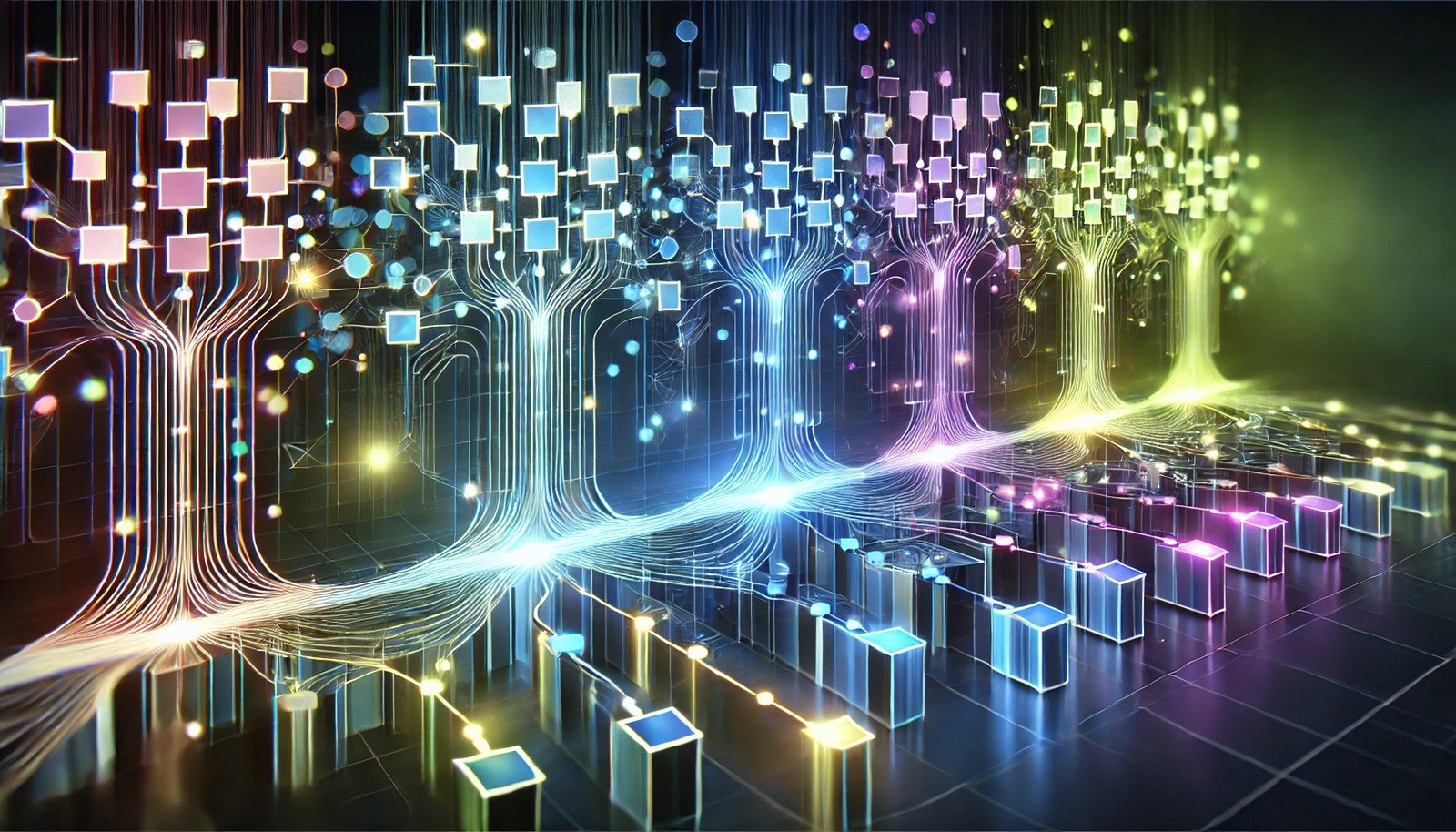AI Transformer

Quick Navigation:
- Transformer Definition
- Transformer Explained Easy
- Transformer Origin
- Transformer Etymology
- Transformer Usage Trends
- Transformer Usage
- Transformer Examples in Context
- Transformer FAQ
- Transformer Related Words
Transformer Definition
A transformer is a deep learning model architecture introduced to handle sequential data by utilizing a mechanism called self-attention. Unlike traditional recurrent neural networks (RNNs), transformers can process input data simultaneously, making them faster and more efficient for tasks like natural language processing (NLP). The core idea behind transformers is to allow models to weigh the importance of different parts of the input data through attention mechanisms, enabling better understanding and context extraction.
Transformer Explained Easy
Imagine reading a book and trying to remember all the characters and events on each page at once. A transformer does something similar—it reads a lot of words and figures out which parts are important, all at the same time. Instead of reading word by word, it can see the whole paragraph at once and understand which words help each other make sense.
Transformer Origin
The transformer model was first introduced by researchers at Google Brain in a groundbreaking paper titled “Attention Is All You Need,” published in 2017. This model revolutionized NLP by moving away from RNNs and Long Short-Term Memory (LSTM) networks, which processed sequences sequentially and had limitations with long dependencies.
Transformer Etymology
The term ‘transformer’ comes from the model’s ability to transform input sequences into output sequences by attending to all parts of the input simultaneously, reshaping how language models work.
Transformer Usage Trends
Transformers have seen an exponential increase in usage across various fields of AI, especially in NLP and computer vision. Their versatility and effectiveness in tasks like language translation, text generation, and image recognition have led to widespread adoption in industry and research. The introduction of transformer-based models such as BERT and GPT has further popularized the architecture, making it a fundamental tool in modern AI applications.
Transformer Usage
- Formal/Technical Tagging: Neural network, NLP, attention mechanism, deep learning
- Typical Collocations: transformer model, self-attention mechanism, encoder-decoder, transformer network
Transformer Examples in Context
- “The transformer model outperformed previous state-of-the-art RNNs in language translation tasks, achieving better accuracy and speed.”
- “BERT, a transformer-based model, set a new standard for understanding natural language.”
- “Researchers utilized transformers to improve the performance of machine vision systems.”
Transformer FAQ
- What is a transformer in AI?
A transformer is a type of deep learning model architecture that processes input data using a self-attention mechanism to understand context efficiently. - Why are transformers better than RNNs?
Transformers can process data in parallel and handle long-range dependencies more effectively than RNNs, which process data sequentially. - What is the self-attention mechanism?
Self-attention allows the model to focus on different parts of the input sequence and weigh their importance in relation to each other. - What tasks are transformers used for?
Transformers are used for NLP tasks like translation, summarization, and text generation, as well as image recognition and protein structure prediction. - What is the main advantage of using transformers?
The main advantage is their ability to process sequences in parallel, making them faster and more efficient for training on large datasets. - What are examples of transformer-based models?
Examples include BERT, GPT, T5, and Vision Transformers (ViT). - Who created the transformer model?
The transformer model was created by a team at Google Brain and introduced in their 2017 paper. - What is the difference between encoder and decoder in a transformer?
An encoder reads and encodes input data, while a decoder processes this encoded information to generate an output. - How do transformers impact machine learning?
Transformers have significantly improved the accuracy and efficiency of many ML tasks by allowing better context understanding. - What is the ‘Attention Is All You Need’ paper?
It is the seminal research paper published by Google Brain that introduced the transformer model and its self-attention mechanism.
Transformer Related Words
- Categories/Topics: Deep learning, NLP, computer vision
- Word Families: Attention, encoder, decoder, BERT, GPT
Did you know?
Transformers are not limited to text-based applications; they have been adapted to other fields like computer vision, where models like Vision Transformers (ViT) use the same architecture to achieve state-of-the-art performance in image classification.
PicDictionary.com is an online dictionary in pictures. If you have questions or suggestions, please reach out to us on WhatsApp or Twitter.Authors | Arjun Vishnu | @ArjunAndVishnu

I am Vishnu. I like AI, Linux, Single Board Computers, and Cloud Computing. I create the web & video content, and I also write for popular websites.
My younger brother, Arjun handles image & video editing. Together, we run a YouTube Channel that's focused on reviewing gadgets and explaining technology.



Comments powered by CComment